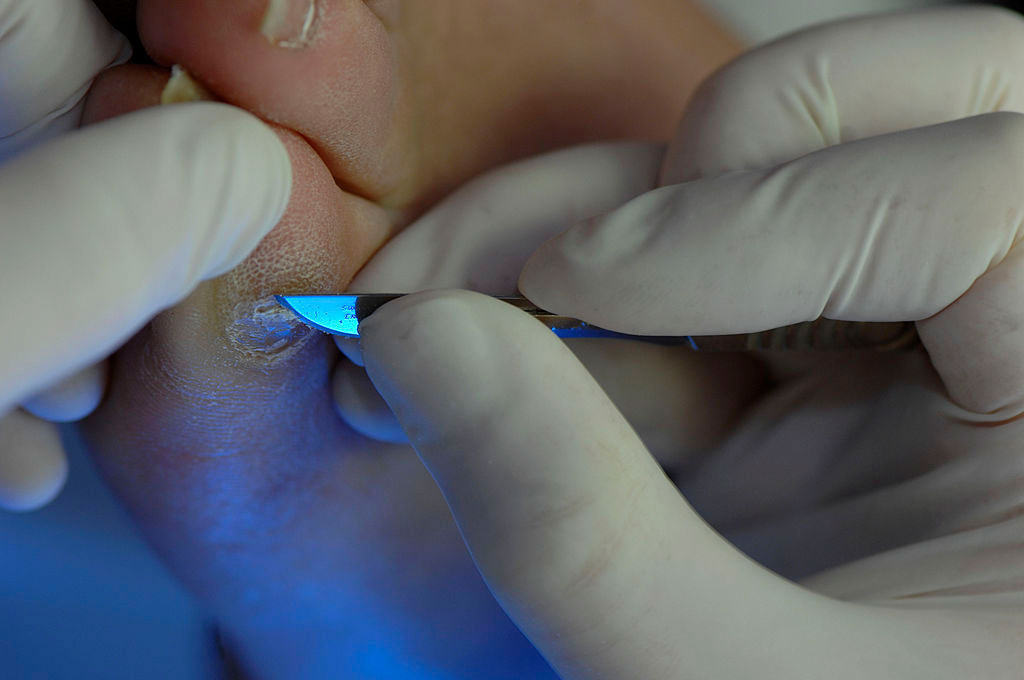How to Get Rid of Corns and Calluses

Ill-fitting shoes are a frequent reason for corns and calluses. Here's what you should know about how to get rid of corns and calluses and prevent them.
Although corns and calluses can sometimes be painful, they form to protect the tissue underneath them.
They’re areas of thickened skin. Painless calluses can frequently occur on the feet and hands of guitar players, tennis players, and construction workers. Under those circumstances, calluses are beneficial and needed.
Causes of corns and calluses
Corns happen strictly on your feet and are usually the result of ill-fitting shoes or arthritis. They develop due to bone pressure against your skin. Corns are common on the tops and sides of toes and on the balls of your feet. They can be hard and dry or soft and mushy.
Calluses can become very thick but are usually painless. They develop when your skin rubs against something, such as a bone, a shoe, or the ground. They often form over the ball of your foot because that area takes most of your weight when you walk.
YOU MIGHT ALSO LIKE: Our Foot Care Section
You can develop corns and calluses for many reasons, and correcting those issues is the best way to get rid of corns and calluses.
Activities that put repeated pressure on your foot, such as running or walking barefoot, can cause calluses to form. Athletes are particularly susceptible to them.
The size or type of shoes is usually the reason for most foot problems. The shoes may not be uncomfortable, but they still may be causing certain pressure or friction at sites where corns and calluses develop.
Being overweight is another cause of corns and calluses because of the pressure your weight exerts on the balls and heels of your feet, adds Jay Brachfeld, MD, a dermatologist in Boca Raton, Fla.
How to get rid of corns and calluses
Most pharmacies sell felt pads for cushioning corns, callus removing liquids, and pumice stones to sand down a callus.
You should never try to remove corns and calluses with cutting tools, such as razor blades or shavers, as that can result in serious infection, Brachfeld says. If you want or need immediate relief, a podiatrist or dermatologist can remove those areas of skin for you.
A doctor can trim the thickened skin of a corn or callus with a scalpel. Sometimes, you need repeated or regular trimming sessions. Once a corn or callus has been pared down, it may not return if you use the right shoes.
Chemical treatments can also help. Most contain salicylic acid, which dissolves the protein that makes up your corn and the thick layer of dead skin on top of it.
With your shoes, you might be buying the correct size, but not the correct width. “Get your feet professionally measured at least once at a good shoe store or foot doctor’s office to know the correct size and width of your foot. Also, going without socks can increase pressure from shoes,” Brachfeld says.
He adds that deficiencies in A, E, and B vitamins, as well as essential fatty acids (omega 3s), can aggravate these skin conditions. Be sure your multivitamin contains them. You can also take daily fish oil capsules.
For many people, corns and calluses are a daily part of life, but not necessarily. Wearing the right shoes for your feet can prevent most problems.
YOU MIGHT ALSO LIKE: Your Feet Support You, So Support Your Feet
Updated:
July 11, 2023
Reviewed By:
Janet O’Dell, RN